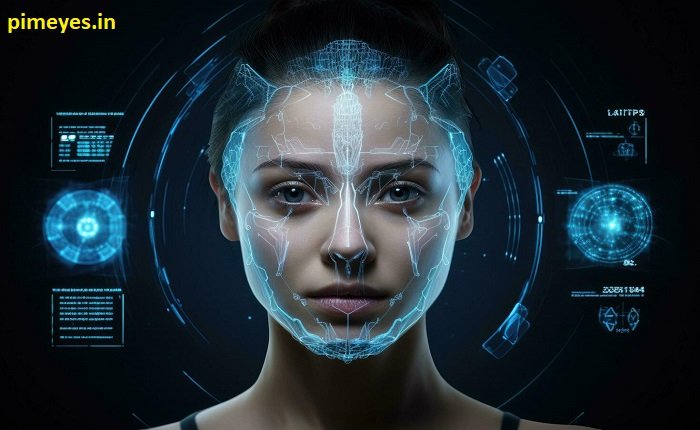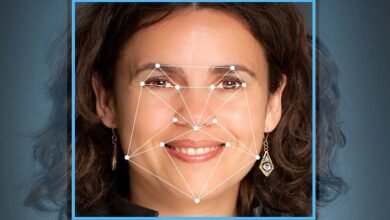Free Face Recognition: A Comprehensive Guide

Face recognition free of charge in the digital age has never been more popular, changing the way we interact with the world surrounding us. The use cases of free face recognition on que people to provide free face recognition to enhance security measures, tailor user experiences, and much more. In this comprehensive guide, we will break down the mechanics of face recognition how it works, its advantages, its challenges, and the many ways it can be used across different industries. The free face technology is a fundamental aspect of one of the most discussed trending technology in the world. Follow along as we explore free face recognition s, showcasing what its all about and how you can deploy and reap its benefits today!
What Free Face Recognition is and how does it work?
Face recognition software and applications that recognize or verify people by their facial features without cost. Free face recognition works by looking at a person’s unique attributes and then generating a face signature based on the distance between the person’s eyes, nose shape, and jaw line using advanced algorithms and artificial intelligence. People widely use this tech in many fields such as security, marketing, and personal device management. The availability of free face recognition software has democratized biometric identification, enabling individuals and small firms to benefit from advanced face recognition features without the financial means often required to deploy these systems. With the availability of such free face recognition services, developers and businesses are paving the way for the widespread use and creativity of facial biometrics, which will soon allow people to incorporate this technology into their lifestyle and working ways.
How to Use Free Face Recognition?
To be able to understand what free face recognition is capable of, and where is the line between what is possible and what is just a failed attempt, we must understand how free face recognition truly works. Essentially, free face recognition tech uses complex algorithms to analyze and interpret unique facial features based on images or video. It starts with facial detection, in which the framework scopes out and points faces in a frame. When it does, it identifies essential facial features including the eyes, nose, mouth and jawline to form a unique facial template, also known as a facial signature. This template is then matched against a database of known faces to identify or verify individuals. Free face recognition systems work on machine learning principles, thus can learn from the data entered each time and grow over time. Furthermore, neural networks and deep learning improvements have helped the accuracy and dependability of free face recognition applications considerably, enabling them to manage alterations in lighting, angles, and facial expressions more effectively. Using these advanced methods, free face recognition offers powerful and effective identification and verification solutions for a wide range of applications.
Applications of Free Face Recognition
Free face recognition technology is highly versatile, and it can be used in various industries. Security : Due to the increase in the number of crime we need a security system which is able to identify different faces this is where we use free face Recognition in security, for the monitoring purpose of the system. In the consumer sphere, owners of smartphones and laptops benefit from free face recognition, which provides a safer and easier way of user authentication without the need for passwords. Also, the free face recognition is widely used in the marketing industry to analyze customer demographics and behaviors to personalize advertisements to increase efficiency and improving experiences. While free face recognition in healthcare helps in identifying patients and improving patients’ access to their medical records, improving the efficiency of healthcare services. Furthermore, academic institutions leverage free facial recognition systems to assess attendance and bolster safety on campus. In the entertainment sector, face recognition, when provided for free, can enhance user experiences in video games or online music streaming platforms by making them interactive and personalized. Such a wide-ranging impact exemplifies the revolutionary impact of free face recognition and its application to sector vertical innovation across each aspect of modern life.
Advantages of Free Face Recognition
To read more about the benefits of implementing free face recognition technology in your personal and professional life, check out the following link. This brings us to one of its major benefits — heightened security; with no-cost facial recognition, you are given a trusted mechanism for validating users, making the chance of unauthorized access or ID fraud lower. Moreover, free face recognition reduces friction on the user end, allowing a seamless user experience that no longer requires a traditional password or PIN for authentication. Not only does this provide a better user experience but this increases the operational efficiency of environments like workspaces and personal devices. Another key advantage of free facial recognition is cost-effectiveness that enables individuals and enterprise to use sophisticated biometric technologies without the extravagant costs usually associated with such systems. Additionally, the ability of free face recognition to analyze facial expressions and emotions can be utilized to create personalized experiences for customers, such as personalized advertising or targeted content recommendations, making it an invaluable tool in marketing and sales. Free face recognition can be easily scalable, which allows this system to be used in multiple applications based on the end-user, in case you are an individual, then it can be self-use or face recognition, immediate notifications wherever necessary or in case of an enterprise level it can be used in a more enterprise way. With the cost and profitable nature of face recognition systems, free face recognition has great advantages in security, efficiency, and personalization.
Challenges and Limitations of Free Face Recognition
As powerful and useful as Free face recognition technology is, it has its challenges and limitations. Privacy is one of the major concerns as free face recognition frequently requires the collection and processing of sensitive biometric data, giving rise to major privacy and data protection concerns. Free face recognition must be used ethically, otherwise individuals can be threatened in the future. The performance of free face recognition can also be impacted by a number of elements, including the lighting conditions, the quality of the image, and the presence of lip-covers, such as masks and spectacles. False Positives: These are results that are misleading in nature, and a false positive might show the presence of a mechanism where there is none. Free face recognition systems might have similar issues with a more diverse and dynamic environment, where differences in facial expressions and orientations can affect performance. Another issue related to free face recognition is its scalability, as keeping up to date with large libraries of facial information may take great resources and be complicated. In addition, most users lack the technical know-how and infrastructure to pull together existing systems with a free face recognition platform. Thus, handling these challenges is necessary to harness the power of free face recognition to maximize its benefits while minimizing potential pitfalls and limitations.
Face Recognition in Security Systems for Free
Free face recognition has a plethora of applications_BUILDING SECURITY BEING PERHAPS ONE OF THE MOST VISIBLE AND EFFECTIVE_jsii The application of free face recognition application is also a key feature for homeowners, based to serve as an add-on for smart home setups, to monitor and facilitate home access only to verified users and non-interfacing visitors. This makes homes much more secure with real-time alerts and automated responses to unauthorized access. Through free face recognition, it is most widely used on sidewalk surveillance cameras or monitoring systems to detect suspects and criminal activities. Law enforcement agencies use free face recognition, which helps them capably identify suspects and solve cases faster. Moreover free face recognition is applied in the business field for controlling access to restricted areas, keeping track of who is entering the office and identifying unauthorized access. Reducing traditional security systems.
Face Recognition in Personal Devices Free of Cost
Free face recognition was enabled in personal devices and thus users started engaging with the technology by cameras as services with improved security and convenience for the user. Current smart mobile devices and computers often include free face recognition features to unlock the device and replace traditional passwords or biometric devices such as a fingerprint scanner. This type of authentication is faster and more secure, as facial recognition provides an extra layer of security against unauthorized access. In addition, it is also used in different rowing such as special photo organization where it automatically arranges and tags photos on the basis of recognized faces which helps users manage their digital photo libraries better. Free face recognition offered on social media sites are used for features such as automatic tagging in photos of family or friends, increasing engagement. Additionally, we have free face recognition enables personalized user experiences, as devices can adjust settings based on the recognized individual, such as changing display preferences or offering tailored content recommendations. Face recognition has also increasingly been used in personal devices, which is free, while the wide applicability reinforces face recognition as both a safety feature and user experience catalyst to fit consumers’ lives.
Free Face Recognition at Marketing and Retail
Free image recognition has been revolutionizing customer engagement and personalization strategies in marketing and retail. Face recognition is used in retail to identify people as they move through shops and understand demographics, behavior and interests. Such data enables businesses to customize their marketing images by providing targeted promotions and also item suggestions specific to each customer. External-facing face recognition also improves in-store experiences, such as personalized greetings, interactive displays, and targeted advertising, all of which contribute to a more engaging and tailored shopping experience. How do free face recognition come in handy in loyalty programs by accurately identifying repeat customers in the stores and observing purchasing patterns so that rewards, points, and incentives can be delivered to encourage customer patronage? The Key Differences of Face Recognition TechnologyFace recognition explores more than one physical element even though it still heavily relies on digital data. Free face recognition not only increases customer satisfaction, but also contributes to higher sales volumes and more effective marketing campaigns, allowing marketing and retail companies to harness new, immensely powerful technology in their tech stacks.
Free Face Recognition in Healthcare
Free face recognition technologies have made a huge impact on every front of the healthcare industry. Examples of such popular applications in the field of patient identification system:UNLOCK ELECTRONIC MEDICAL RECORDS ACCESS SYSTEMS WITH FACE RECOGNITION Busefree Face Identification is utilized in records access systems to properly recognize the patient for access, helping prevent possible identity confusion, and improving patient data accuracy. This improves the check-in process, facilitating the speedier and more efficient processing of patients, especially in health care facilities where time is of the essence. Also, free face acknowledgment can be utilized in watching patient adherence to treatment plans by following participation in booked arrangements and treatments to improve general treatment outcomes. For example, in a hospital security system, free face recognition can provide an added layer of security by restricting access to sensitive areas, only allowing authorized personnel to enter specific zones. Moreover, Free face recognition helps in the management of staff attendance and enhances work force management enabling more efficient functioning of the hospitals. The future of free face recognition in healthcare includes several applications that can fundamentally change how medical professionals work.
Free Face Recognition in Education
In recent years, schools and universities have implemented these free face recognition technologies, which can serve to increase security, help administrative processes, and enhance the overall learning environment. In schools and universities, free face recognition is used to monitor and control access to the campuses, enabling only authorized people to enter the buildings, dormitories, and other restricting areas. This can help to improve campus security significantly, as it can detect and send alerts for unauthorized access attempts in real-time. Moreover, free face recognition also serves attendance management, eliminating the need for students to sign in to a class and freeing educators and staff members from the tedious task of maintaining record. By analyzing this data, attendance patterns and absenteeism can be tracked to maintain compliance and address any academic issues. For example, free face recognition allows personalized learning experiences with dynamic adaptations for educational content, based on behavior and historical context. Additionally, the use of free face recognition can contribute to a more secure and efficient campus environment, as it allows for seamless access control and efficient resource management. Institutions can maintain a safer, efficient, and individualized learning experience by leveraging the power of free face recognition technology.
Unlabeled Data in Entertainment and Media
Free face recognition technologies are utilized throughout the entertainment and media industries to make the experience more engaging and personalized for their audience. Free face recognition can be used in this game to provide interactive and immersive experiences, enabling characters to react to the player face and emotions within seconds. This helps to increase immersion and interactivity, keeping games more fun and exciting. In film and television, free face recognition is employed in special effects and animation by accurately mapping facial movements, allowing the creation of realistic characters and seamless visual effects. Furthermore, free face recognition is employed in content personalization, where media platforms assess viewers’ preferences and online behaviors to suggest customized content, improving user satisfaction and participation. Even social media platforms implement free face recognition functions to provide augmented reality filters, automatically tag photos with users’ names, and suggest content tailored to personal interests, ultimately increasing user engagement and interaction. Instagram is easy to use, and so is the rest free face recognition audience analytics. Free face recognition enables the entertainment and media industries reach new heights of creativity in delivering interactive and personalized experiences to their audiences.
Current and Future Trends in Free Face Recognition
Free face recognition will be developing and implementing on a larger scale in the future. One major trend is the use of artificial intelligence and machine learning, which are being implemented to make free face recognition systems more accurate and efficient. This new development should allow free recognition tools to be used with a wider variety of testing environments and applications, greatly increasing the reliability of the results that they yield when applied in the real world. In addition, with more advanced algorithms, free face recognition will be able to conduct deeper analysis of faces, such as recognizing emotions and estimating age, which may also bring new scenarios for personalized interaction and services. The future of face recognition will see a focus on privacy, with new free face recognition technologies that will incorporate strong encryption and data protection protocols to secure sensitive biometric data. Second, the expansion of Internet of Things (IoT) devices will lead to the further adoption of free face recognition in common items, like smart home devices and wearables, making life easier for users and enhancing connectivity with their surroundings. Advanced, immersive, and interactive experiences have become essential, giving more engagement opportunities in augmented and virtual world applications using face recognition. It will contribute to the future of digital interactions, security, and personalization, as free face recognition technology continues to evolve and become an integral part of our lives.
Ethics of Free Face Recognition
Ethical Issues of Free Face Recognition Technology The extensive use of face recognition technology raises many ethical issues that must be carefully considered to ensure its responsible use. One of the initial issues is privacy face recognition means collecting, storing, and analysing sensitive biometric data, which poses issues of consent, data ownership, and potential misuse. It is important from an ethical standpoint that people be made aware of and consented to the capture and usage of their facial data. And then there is the unfairness and bias of free to use face recognition systems. If the underlying algorithms are trained on non-representative datasets, free face recognition systems may manifest biased towards certain demographic groups, resulting in incorrect or discriminatory outcomes, It needs to carefully designing algorithms and ensuring that training data is diverse, so that AI can perform nicely for all groups of users — not just a few. Another ethical issue is surveillance and the loss of anonymity, because face recognition allows for ubiquitous monitoring of individuals without their awareness or approval. We also have to guarantee the rights and liberties of people while recognizing the advantages of free face recognition. Finally, there are privacy issues and the potential for abuse of facial data leading to data theft and various other frauds. These are essential for minimizing the risks involved. The technologies positive societal benefits of free face recognition can be made by addressing these ethical questions of its responsible deployment while respecting individual rights and maintaining trust.
The Free Option and Paid Solutions for Face Recognition
Free vs Paid Face Recognition To Use Face Recognition Technology Free face recognition comes with its own set of benefits, most notably its cost-saving benefit, meaning that it is available to individuals, startups, and small businesses that may not be able to afford premium software. Moreover, since many free face recognition tools are open-source, different users can modify and adjust the technology according to their particular requirements without incurring further expenses. Let us show you some face recognition options available and what is their trade-off between being free and fulfilling your requirements, as free options may not provide the advanced features that paid options do. And some paid ones your able to find also have more features, but may have high accuracy rates, real-time processing and offer us support. But even paid solutions often can provide a level of data security and industry compliance that mere apps cannot, ensuring that you are handling sensitive biometric data with the utmost care. Conversely, free facial recognition is best suited for testing, learning, and small-scale projects when budget is your biggest challenge. In the end, free face recognition vs paid solutions may come down to what the user or organization needs, how much of it needs to be done, their budget, and all its considerations. Careful consideration of the balance between their cost and functionality can always help readers make an informed decision.
So How do You Choose the Right Free Face Recognition Tool?
When interested in exploring free face recognition tools, it is crucial to take into account the following different factors to find the right tool for your needs. Assess the accuracy and reliability of the free face recognition tool by reading performance metrics and user reviews, this is the first most thing to do. Because applications that demand precise identification and verification, such as security systems and authentication processes, require high accuracy rates. Consider also how easy it is to integrate with your current systems and platforms. A simple face recognition tool that can integrate smoothly into your existing infrastructure will reduce implementation time and effort. A key consideration is the degree of customization and flexibility the tool provides. The only bespoke adjustment available in proprietary tools, while on the other hand, open-source face recognition solutions allow you to develop and adapt the technology to your particular needs. It can be good if you can find documentation, tutorials, examples, or other information to use them as some of these free face recognition tools will require some effort to use as they tend to be more primitive. You may also Annex security risk management and industry grade data protection provided by the tool to protect sensitive biometrics from unauthorized access and breaches. Finally, consider whether your face recognition solution is scalable, or if it will be able to grow and adapt to meet increasing demand and new uses. By considering these factors you are able to choose the right free face recognition tool which meets your aim and provides a strong and effective face recognition solution.
Considerations For Using Free Facial Recognition: Part II
Implementing free face recognition is a challenge that is possible if the system is used according to best practices that allow for effective, ethical, and safe use of the system. Begin by defining clear goals and scenarios for face recognition for your organization or individual projects. Depending on what you are trying to achieve, it will determine which of the various free face recognition tools and approaches are right for you. Then data privacy and security should be a key focal point, they should main strict protocols for data collection, storage, and processing. Encrypt all facial data and securely store it to prevent unauthorized access and breaches. Also, seek consent from people before collecting and utilizing their facial data, being mindful of legal and ethical guidelines. [2] It is vital that users are trained to use free face recognition tools correctly, underscoring consideration for accuracy, fairness and privacy. Keep the face recognition system up to date by installing the latest updates and patches to improve performance and patch any potential vulnerabilities. In addition, the quality of their performance is monitored and evaluated continuously, and deviations from the target values are corrected by means of automatic or manual adjustments, to ensure the high standard of the technology. Free Face Recognition Compatibility with Existing Databases Finally, develop policies and guidelines for face recognition usage, specifying acceptable uses and addressing potential ethical issues. These best practices help you implement free face recognition in a way that maximizes benefits and minimizes risk and challenge.
Face Recognition for Free & Data Privacy Legislation
Data privacy laws are typically designed to steer the use of free face recognition technologies in a compliant direction, but they are also not without their caveats. Individual jurisdictions have passed laws regulating the collection, processing and storage of biometric information, including facial recognition data. A case in point is the General Data Protection Regulation (GDPR) in the European Union, which has very stringent standards on what constitutes proper handling of personal data, including clear consent, data minimization, and the right to be forgotten. The same can be said for the California Consumer Privacy Act (CCPA), which grants consumers rights about how their personal information, including biometric data processed by face recognition systems, can be accessed, deleted and shared. In the United States, various state laws and regulations can affect the use of free face recognition, emphasizing the need for legal literacy in different jurisdictions. Data security is king here, and you can expect strict audits and an open book attitude for all manner of facial data collection and use. “We don’t even have the legal protections that you might expect in the free face system, and we certainly need to have clear rules for when that data is stored at all, that it’s stored no longer than necessary and that using it, or anything that you don’t even need to maintain, is securely disposed of.” Users and organizations can responsibly utilize free face recognition technologies while protecting the privacy and rights of individuals and therefore maintain trust while reducing legal risks associated with each application of biometric data utilization by complying with data privacy laws.
Conclusion
The free face recognition technology is a landmark invention in the field of biometrics which easily help improve the security and efficiency of operations in many industries. The adaptability and accessibility of no-cost face recognition have made facial biometrics ubiquitous across personal devices, security, marketing, healthcare, and education, democratizing the technology and empowering widespread adoption and innovation. Still, providing face recognition ability comes with its issues as well, including privacy, data security and algorithmic biases. It is of upmost importance that these challenges — ethical and technical — are discussed and addressed so that free face recognition technologies can be used responsibly to deliver effective use cases. The technology is continuing to evolve, and future trends suggest an even deeper integration of advanced algorithms and machine learning, leading to improved accuracy and novel use cases that will continue pushing the boundaries of face recognition. With careful consideration of privacy rights and regulations, individuals and organizations can leverage free face recognition to shape how we communicate with technology and one another in an evolving digital landscape.
FAQs
Who is the free face recognition technology? Free face recognition: free software (applications) to identify/verify a person from the image of his/her face. It uses sophisticated algorithms and artificial intelligence to analyze the details of a face to identify it.
How accurate is higher free face recognition compared to paid software? These free technologies have updated and become more accurate over the years, but paid solutions are still more precise, with many different capabilities and support. Free face recognition has varying accuracy depending on the tool and data used.
So, is it safe to use FREE face recognition? Whether free-to-use face recognition is safe to use depends on the individual tool and how it works with your data. You should use the reliable free face recognition tool, which has strong security and maintains data privacy laws.
Is free facial recognition available for commercial use? Free face recognition can be used for commercial purposes, but you must make sure that the particular tool you are considering allows for such use and adheres to all relevant data privacy and consent regulations to avoid the risk of legal repercussions.
What are the main ethical concerns of free face recognition? Some of the key ethical issues are invasion of privacy, potential abuse of biometric data, bias and discrimination in recognition algorithms, and the absence of informed consent from the individuals whose faces are recognized and analyzed.




